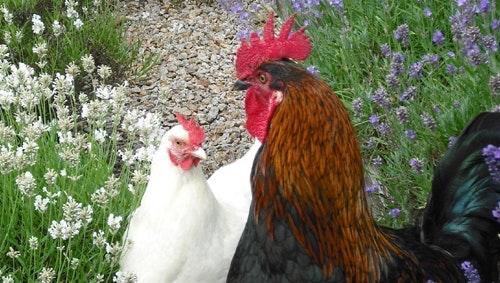MOOC List is learner-supported. When you buy through links on our site, we may earn an affiliate commission.

MOOC List is learner-supported. When you buy through links on our site, we may earn an affiliate commission.
Learning Objectives:
- Describe avian sensory perception and motivation
- Explain the main behaviour patterns of poultry
- Define welfare and explain the bases of welfare standards
- Assess chicken welfare, using behavioural and physiological means
- Understand common welfare problems of chickens
This course is taught by staff from Scotland's Rural College (SRUC), University of Glasgow, and St David's Poultry Team.
Syllabus
WEEK 1
Getting Started
This brief module will tell you all the things you need to know to begin, including the syllabus of the course, who we are, how to engage with one another.
Introduction to Animal Behaviour: Domestication, Behaviour Development and Learning, the Senses
Welcome to the first week of the Chicken Behaviour and Welfare Course. If you haven't seen it - watch the video which introduces you to the course: you can find it under "Getting Started; Welcome!" During this lesson, we will consider what makes a domestic animal, how behaviour develops in the chicken from before hatching and beyond, different types of learning and the senses - vision, hearing, taste, smell and touch.
WEEK 2
Behaviour Patterns of Chickens, Part 1
During this week, we will consider some of the major behaviour patterns of chickens, such as maintenance behaviours of chickens, and social behaviours. Maintenance behaviours means feeding, drinking, and comfort activities. Comfort activities include preening, dustbathing, and perching (among others). Social behaviours include communication, dominance, aggression, and spacing. This week will be a combination of video lectures, in-video quizzes and an interview with a backyard producer.
WEEK 3
Behaviour Patterns of Chickens, Part 2
Welcome back everyone! During this week, we will consider the reproduction process in chickens, from courtship to brooding and hatching of eggs. We will then look at some abnormal behaviours that you might see in chickens. This week will be a combination of video lectures, in-video quizzes, video clips from outside sources, and a downloadable poster on eggshell abnormality.
WEEK 4
What is chicken welfare? Defining "welfare", ethical obligations, and welfare standards
During this week, we will consider what we mean by "animal welfare", and how a set of criteria known as the Five Freedoms can help you assess it. Dr Dorothy McKeegan from the University of Glasgow will discuss what the ethical obligations are of meeting an animal's welfare needs, and we will explore some of the various welfare standards that exist. Finally, we will look at welfare indicators, and Dr Barry Thorp from St David's Veterinary Team will discuss with Vicky what signs to look for in chicken flocks to make a welfare assessment. This week's Learning Outcomes: •Define 'welfare' and the Five Freedoms •What drives our ethical choices, including cost-benefit analysis •Describe some welfare standards available worldwide and how they differ •Explain ways to assess welfare, using behavioural and physiological indices
WEEK 5
Effects of housing, transport and slaughter on bird welfare
This is the last week of the Chicken Behaviour and Welfare course, you are almost at the finish line... During this week, we will consider the welfare of layer hens and broiler (meat) chickens, from hatch to slaughter, particularly in common commercial systems. This week's Learning Outcomes: •Compare the most common housing systems used in Europe for laying hens •Compare the most common housing systems used in Europe for broiler chickens •Discuss the pros and cons of free range housing •Describe methods of emergency killing •Discuss different transport requirements, depending on the scale •Describe some of the common methods of slaughtering poultry.
MOOC List is learner-supported. When you buy through links on our site, we may earn an affiliate commission.
MOOC List is learner-supported. When you buy through links on our site, we may earn an affiliate commission.
